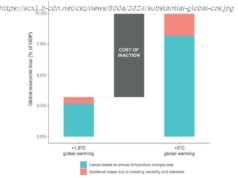As bleaching devastates the critical ecosystem for a second year in a row, marine scientists are getting desperate.
A group of Australian marine scientists believe that altering clouds might offer one of the best hopes for saving the Great Barrier Reef.
For the last six months, researchers at the Sydney Institute of Marine Science and the University of Sydney School of Geosciences have been meeting regularly to explore the possibility of making low-lying clouds off the northeastern coast of Australia more reflective in order to cool the waters surrounding the world’s biggest coral reef system.
During the last two years, the Great Barrier Reef has been devastated by wide-scale bleaching, which occurs as warm ocean waters cause corals to discharge the algae that live in symbiosis with them. Last year, as El Niño events cranked up ocean temperatures, at least 20 percent of the reef died and more than 90 percent of it was damaged.
The Australian researchers took a hard look at a number of potential ways to preserve the reefs. But at this point, making clouds more reflective looks like the most feasible way to protect an ecosystem that stretches across more than 130,000 square miles, says Daniel Harrison, a postdoctoral research associate with the Ocean Technology Group at the University of Sydney. “Cloud brightening is the only thing we’ve identified that’s scalable, sensible, and relatively environmentally benign,” he says.
They’re one of several research groups that have started to explore whether cloud brightening, generally discussed as a potential tool to alter the climate as a whole, could be applied in more targeted ways. All the scientists involved stress that the research is in its infancy. No one has tested a system for cloud brightening at all, much less in geographically focused applications.
British scientist John Latham first proposed the idea as a potential way of controlling global warming in Nature nearly 30 years ago. The theory is that fleets of ships could spray tiny salt particles, generated from sea water, toward the low-lying marine clouds that hug the coasts of several continents. That would provide the nuclei needed to induce additional droplet formation, expanding the total surface area of the clouds. The resulting dense, white clouds should reflect more heat back into space.






